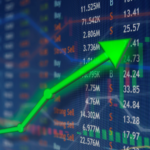First, what interest rates are we talking about and why is it important to both the economy and business decisions?
There is an old saying that money makes the world go around. In economic parlance this is not quite correct. Actually, it is the cost of money that makes the world go around, and this cost of money is reflected in the level of interest rates. As the level of interest rates rise, businesspeople and investors demand a higher rate-of-return on their capital investment to justify the expenditure. The result is similar to “walking up a pyramid” in that fewer and fewer capital expenditures can justify the targeted rate-of-return. As productive investment decreases, so does the speed at which money circulates (its velocity). With some lag time the economy begins to slow and unemployment starts to increase.
With such importance attached to interest rates, does the Federal Reserve Board (FED) really control their level? To simplify, we must differentiate between short-term and long-term rates. Interest rates on securities that mature in less than a year would be considered short-term, while interest rates on securities that mature in over 10 years would denote long-term rates.
The FED through its open market policies does have a powerful impact on short-term interest rates, namely the federal funds rate and its brother, the three-month Treasury bill rate. The federal funds rate is an overnight rate at which banks lend to each other.
Long-term interest rates, however, are set more by the market than by the FED. These rates reflect peoples’ expectations of economic growth, both real and inflationary. When a businessman issues a 20-year bond yielding 10% interest per year, he is assuming the funds can be profitably invested in an enterprise earning significantly better than 10%. If this isn’t so, why borrow the money at 10%?
The movement of interest rates can give us a clue as to the future direction of the economy. It is not the absolute level of short-term or long-term rates that is important–it is the spread between them. For example, if long-term Treasury bonds are yielding 5% and the 90-day Treasury bills are yielding 2%, then the spread is three percentage points.
As the FED tightens-up on the money supply, short-term rates will climb faster than long-term rates. If short-term interest rates start to climb above long-term rates (as happened in l979, l980, l981, and in year 2000), this is an early warning sign that the economy will be slowing significantly–possibly entering a business recession.
As this happens, it would be best to reduce your short-term debt levels and start to rebuild liquidity. Business slowdowns or recessions can be times of great opportunities, but only for those who have the resources. The future belongs to the swift–Liquidity is King!








